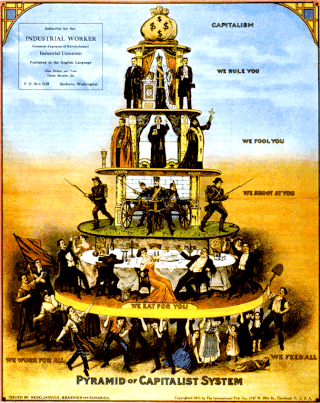
Persuasion or persuasion arts is an umbrella term for influence. Persuasion can influence a person's beliefs, attitudes, intentions, motivations, or behaviours.

Media manipulation refers to orchestrated campaigns in which actors exploit the distinctive features of broadcasting mass communications or digital media platforms to mislead, misinform, or create a narrative that advance their interests and agendas.
Appeal to emotion or argumentum ad passiones is an informal fallacy characterized by the manipulation of the recipient's emotions in order to win an argument, especially in the absence of factual evidence. This kind of appeal to emotion is irrelevant to or distracting from the facts of the argument and encompasses several logical fallacies, including appeal to consequences, appeal to fear, appeal to flattery, appeal to pity, appeal to ridicule, appeal to spite, and wishful thinking.

An attitude "is a summary evaluation of an object of thought. An attitude object can be anything a person discriminates or holds in mind." Attitudes include beliefs (cognition), emotional responses (affect) and behavioral tendencies. In the classical definition an attitude is persistent, while in more contemporary conceptualizations, attitudes may vary depending upon situations, context, or moods.
Attitudes are associated beliefs and behaviors towards some object. They are not stable, and because of the communication and behavior of other people, are subject to change by social influences, as well as by the individual's motivation to maintain cognitive consistency when cognitive dissonance occurs—when two attitudes or attitude and behavior conflict. Attitudes and attitude objects are functions of affective and cognitive components. It has been suggested that the inter-structural composition of an associative network can be altered by the activation of a single node. Thus, by activating an affective or emotional node, attitude change may be possible, though affective and cognitive components tend to be intertwined.
Salience is the state or condition of being prominent. The Oxford English Dictionary defines salience as "most noticeable or important." The concept is discussed in communication, semiotics, linguistics, sociology, psychology, and political science. It has been studied with respect to interpersonal communication, persuasion, politics, and its influence on mass media.
The elaboration likelihood model (ELM) of persuasion is a dual process theory describing the change of attitudes. The ELM was developed by Richard E. Petty and John Cacioppo in 1980. The model aims to explain different ways of processing stimuli, why they are used, and their outcomes on attitude change. The ELM proposes two major routes to persuasion: the central route and the peripheral route.
Douglas Neil Walton was a Canadian academic and author, known for his books and papers on argumentation, logical fallacies and informal logic. He was a Distinguished Research Fellow of the Centre for Research in Reasoning, Argumentation, and Rhetoric (CRRAR) at the University of Windsor, Ontario, Canada, and before that (2008–2014), he held the Assumption Chair of Argumentation Studies at the University of Windsor. Walton's work has been used to better prepare legal arguments and to help develop artificial intelligence.
Fearmongering, or scaremongering, is a form of manipulation that causes fear by using exaggerated rumors of impending danger.

Propaganda techniques are methods used in propaganda to convince an audience to believe what the propagandist wants them to believe. Many propaganda techniques are based on socio-psychological research. Many of these same techniques can be classified as logical fallacies or abusive power and control tactics.
Fear appeal is a term used in psychology, sociology and marketing. It generally describes a strategy for motivating people to take a particular action, endorse a particular policy, or buy a particular product, by arousing fear. A well-known example in television advertising was a commercial employing the musical jingle: "Never pick up a stranger, pick up Prestone anti-freeze." This was accompanied by images of shadowy strangers (hitchhikers) who would presumably do one harm if picked up. The commercial's main appeal was not to the positive features of Prestone anti-freeze, but to the fear of what a "strange" brand might do.
Inoculation theory is a social psychological/communication theory that explains how an attitude or belief can be made resistant to persuasion or influence, in analogy to how a body gains resistance to disease. The theory uses medical inoculation as its explanatory analogy but instead of applying it to disease, it is used to discuss attitudes. It has applicability to public campaigns targeting misinformation and fake news.
The extended parallel process model (EPPM) is a fear appeal theory developed by communications scholar Kim Witte that illustrates how individuals react to fear-inducing messages. Witte subsequently published an initial test of the model in Communication Monographs.
Fear, uncertainty, and doubt (FUD) is a manipulative propaganda tactic used in sales, marketing, public relations, politics, polling, and cults. FUD is generally a strategy to influence perception by disseminating negative and dubious or false information, and is a manifestation of the appeal to fear.
The heuristic-systematic model of information processing (HSM) is a widely recognized model by Shelly Chaiken that attempts to explain how people receive and process persuasive messages. The model states that individuals can process messages in one of two ways: heuristically or systematically. Whereas systematic processing entails careful and deliberative processing of a message, heuristic processing entails the use of simplifying decision rules or 'heuristics' to quickly assess the message content. The guiding belief with this model is that individuals are more apt to minimize their use of cognitive resources, thus affecting the intake and processing of messages. HSM predicts that processing type will influence the extent to which a person is persuaded or exhibits lasting attitude change. HSM is quite similar to the elaboration likelihood model, or ELM. Both models were predominantly developed in the early to mid-1980s and share many of the same concepts and ideas.
In social psychology, the Yale attitude change approach is the study of the conditions under which people are most likely to change their attitudes in response to persuasive messages. This approach to persuasive communications was first studied by Carl Hovland and his colleagues at Yale University during World War II. The basic model of this approach can be described as "who said what to whom": the source of the communication, the nature of the communication and the nature of the audience. According to this approach, many factors affect each component of a persuasive communication. The credibility and attractiveness of the communicator (source), the quality and sincerity of the message, and the attention, intelligence and age of the audience can influence an audience's attitude change with a persuasive communication. Independent variables include the source, message, medium and audience, with the dependent variable the effect of the persuasion.
Self-persuasion is used to explain one aspect of social influence. This theory postulates that the receiver takes an active role in persuading himself or herself to change his or her attitude.Ex. Jon a Falcons fan convincing himself taking a backup qb at 8 will change his franchise. Unlike the direct technique of Persuasion, Self-persuasion is indirect and entails placing people in situations where they are motivated to persuade themselves to change. More specifically what characterizes a self-persuasion situation is that no direct attempt is made to convince anyone of anything. Thus, with self-persuasion, people are convinced that the motivation for change has come from within, so the persuasion factors of another person's influence is irrelevant. Therefore, Self-persuasion is almost always a more powerful form of persuasion than the more traditional persuasion techniques. Self-Persuasion, also has an important influence in Social judgment theory, Elaboration Likelihood Model, Cognitive Dissonance and Narrative paradigm.

In advertising, a fear pattern is a sequence of fear arousal and fear reduction that is felt by the viewing audience when exposed to an advertisement, which attempts to threaten the audience by presenting a negative physical, psychological or social consequence that is likely to occur if they engage in a particular behaviour. Fear appeals are commonly used in social marketing campaigns. These are sometimes called “threat appeals”, however the label “fear appeals” is justified if the appeal can be shown to arouse fear.

Dolores Albarracín is a psychologist, author and professor of psychology and business based in Pennsylvania. She is Professor of Communication at the University of Pennsylvania. She is known for her work in the fields of behavior, communication and persuasion. Her contributions have had implications for the scientific understanding of basic social psychological processes and communication policy, especially in the area of health.





